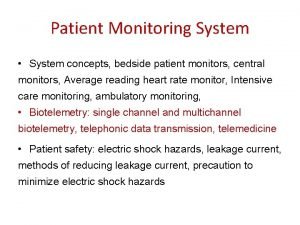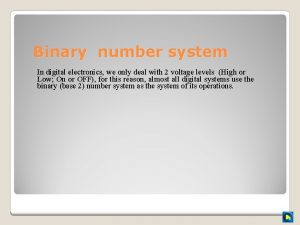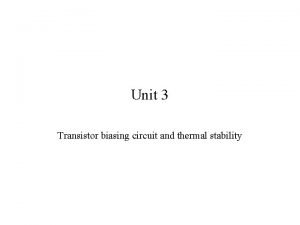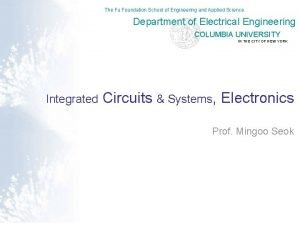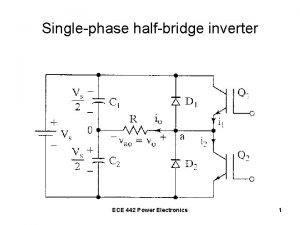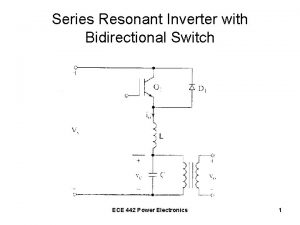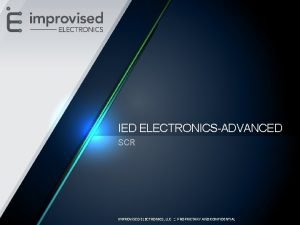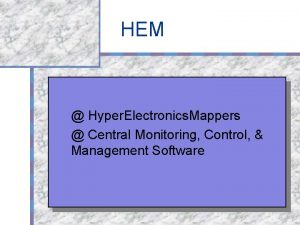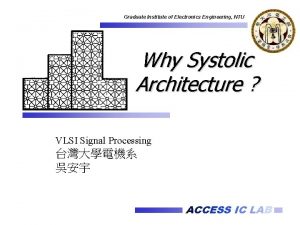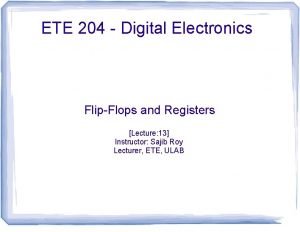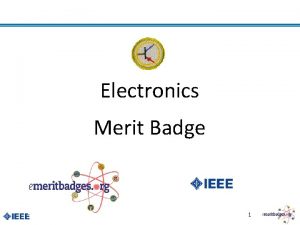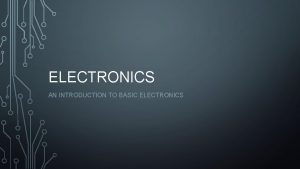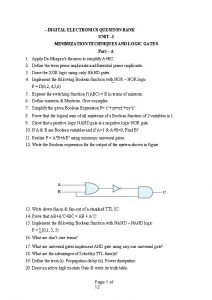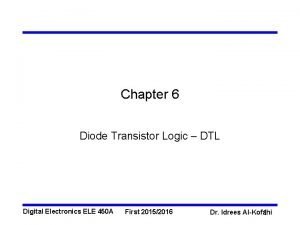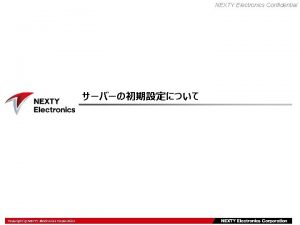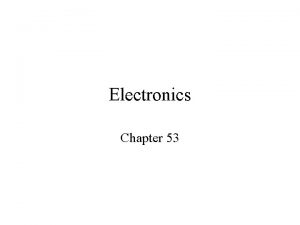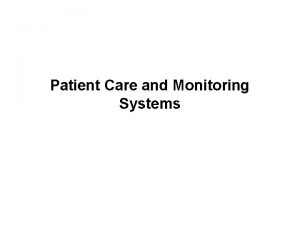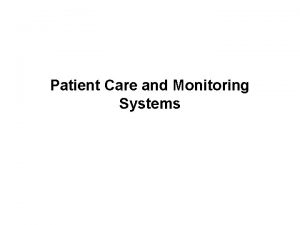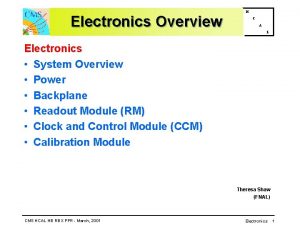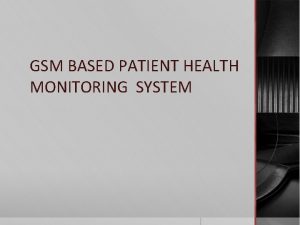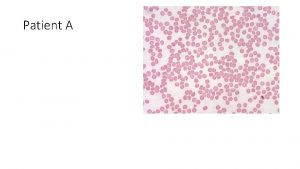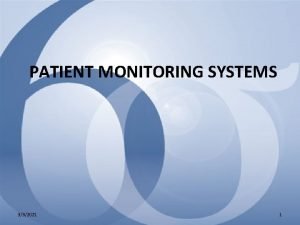Patient Monitoring System In Patient Monitoring System electronics




































- Slides: 36

Patient Monitoring System

�In Patient Monitoring System electronics Equipments are used to provide continuously check over important characteristics and other parameters of patient. �The main purpose is to check any unbalance in the body which may further cause serious diseases like heart attacks or strokes.

Heart Rate Measurement �Heart rate range 0 -250 beats per minute. �For adult 72.

Methods to measure heart rate � 1 By measuring pulse rate � 2 By using a Stethoscope � 3 By using ECG Signal � 4 By using Cardiotachometer � 5 By using Heart Rate Monitor

Pulse Rate Measurement �Pulse Rate – displacement of blood vessels wall which can be felt in some areas of body like wrist. Neck , temple area behind ear. �Most commonly measured at wrist.

Methods to Pulse Rate Measurement � 1 Electrical Impedance Method � 2 Strain Gauze Method � 3 Photoelectric method � 4 Plythsmography

Photoelectric method �Transmittance method

Reflectance method

Plythsmography

Respiration Rate Measurement Respiration �Oxygen enters and CO 2 leaves �Inspiration increase volume of lungs and expiration decrease volumes of lungs. �Inspired air is cooler than expired air. �Range 12 – 18 breaths per minute.

Methods for Respiration Rate Measurement � 1 Displacement Method � 2 Thermistor Method � 3 Impedance Pneumography Method � 4. CO 2 Method

Impedance Pneumography Method

CO 2 Method

Blood Pressure Measurement �Blood pressure is the lateral pressure exerted by blood on vessels wall while flowing through it. Two Types 1. Systolic Blood Pressure: Pressure exerted on arteries during contraction of heart muscles. Range 95 -140 mm of Hg with 120 mm of Hg being average. 2. Diastolic Blood Pressure: Pressure exerted on veins wall during relaxation of heart muscles. Range 60 -90 mm of Hg with 80 mm of Hg being average.

Methods of Pressure Measurement � 1 Direct (Invasive) Method : In this method a blood vessel must be punctured in order to introduce this sensor. �It causes lot of inconvenience and disturbance to the patient. �This method is used when highest degree of accuracy and continuous monitoring is required.

Direct Method Types: A Catheterization ( Vessel cut down): A Catheter is a long tube , inserted in the heart by way of superficial artery or vein. Further using catheter BP can be measured in two ways. Ø First way is to introduce saline solution into the catheter so that fluid pressure is transmitted to the sensor outside the body. Ø Second way is to introduce transducer into the catheter and then pushing it into the required point or the transducer is mounted on the tip of catheter

B Implantation of a Transducer in a vessel or heart: A transducer is permanently implanted in heart or vessel using major surgery. Advantages is that the transducer remain fixed at desired position for longer period and gives accurate results.

Indirect (Non – Invasive ) Method: ü Indirect methods are used externally with patient. ü These produce very little discomfort to the patient. ü In these methods external pressure is made equal to the vascular pressure. ü Less accurate , thus used for routine monitoring and examinations.

Indirect Methods : 1. Sphygmomanometer ØIt is based on the principle that when cuff is inflated above the blood pressures using rubber bulb. ØThen it is deflated slowly through needle valve. ØWhen systolic pressure equals cuff pressure then it is observed using stethoscope and sphygmomanometer. ØFurther cuff is deflated and when diastolic pressure equals cuff pressure then it is observed using stethoscope and sphygmomanometer.

2. Differential Auscultatory Method : It uses Korot. Koff sounds as indirect indicator of blood pressure measurement and it is also called ausculation (use of hearing ) method. � Korot. Koff sounds are the sounds produced by sudden pulsation of blood through a partially occluded artery. � A special cuff mounted sensor is used consisting of pressure sensing elements.

3. Ultrasonic Doppler shift Method :

3. Ultrasonic Doppler shift Method : �In This method pressure is measured based on ultrasonic detection of arterial wall motion. �Wall motion signals are detected during systole and diastole. �Wall motion signal are detected based on ultrasonic Doppler shift principle- in which frequency of transmitted signal is shifted due to back scatter from moving blood particles.

PACEMAKER: �The normal beating of the heart is due to triggering pulses that originates in the sinoartrial (SA) node which is also called Natural Pacemaker. �Some times natural pacemaker does not function properly ---- so we need an artificial pacemaker. �Artificial pacemaker is used to stimulate a rhythmic heart beat by using electrical pulses.

NEED of Artificial Pacemaker: �By giving external stimulation impulses it is possible to regulate the heart rate. �In some cases heart beat may b slow as compare to normal heartbeat or may be fast. So it regulate or control the heart beat and make it normal.

Pacemaker System �A Pacemaker unit consist of two parts(i) An Electronic Unit- which generates stimulating impulses of controlled rate and amplitude (pulse Generator) (ii) The Leads : Which carries pulses from the pulse generator to heart. �These perform two main functions �Sensing- A pacemaker sense the rate of heart beat. �Pacing – If heart beat sensed is slow then pacemaker accelerate the heartbeat and make it normal and vice versa.

Types of Artificial Pacemaker � 1. Internal Pacemaker � 2. External Pacemaker

Internal Pacemaker It is permanently implanted in patients whose SA nod has failed to function properly. In this entire system is inside the body i. e. electrodes , electronic circuitry , and power supply.

External Pacemaker �It consist of an externally worn pulse generator connected to electrodes located on myocardium. �These are used on patients with temporary heart irregularity like arrhythmias.

Difference between external Pacemaker and internal Pacemaker

Defibrillator

Types of Defibrillator �AC �DC �ICD �AED

AC Defibrillator:

AC Defibrillator �Fibrillation-The synchronization between artria and ventricles of heart by which it can perform the function of pumping blood to each part of body. �If the synchronization between artria and ventricles is lost then this condition is called Fibrillation. �During fibrillation heart will not work properly and may lead to disastrous results even to death of patient. �Defibrillation- The process by which a high voltage signal of around 6 A current is applied to patient for around 0. 25 sec to 1 sec to establish synchronization.

DC Defibrillator

ICD –Internal Cardiac Defibrillator

Use of Microprocessor in Patient Monitoring System �Do Your self.
 Sms based patient monitoring system
Sms based patient monitoring system Bedside monitoring system
Bedside monitoring system Patient 2 patient
Patient 2 patient Patient monitoring
Patient monitoring System digital
System digital Number system digital electronics
Number system digital electronics Open source electronics prototyping platform
Open source electronics prototyping platform Thermal runaway in transistor biasing
Thermal runaway in transistor biasing Petsys electronics
Petsys electronics Fannout
Fannout Fu foundation school of engineering
Fu foundation school of engineering Electronics plan sample
Electronics plan sample Gcse electronics
Gcse electronics Power electronics
Power electronics Ece 442
Ece 442 3m anisotropic conductive film adhesive 5363
3m anisotropic conductive film adhesive 5363 Tasfia electronics
Tasfia electronics Ecen 5797
Ecen 5797 Organization structure of mnc
Organization structure of mnc A digital camera is an electronic device
A digital camera is an electronic device Improvised electronics
Improvised electronics Icarus electronics
Icarus electronics Hytec electronics ltd
Hytec electronics ltd Hyper electronics
Hyper electronics Graduate institute of electronics engineering
Graduate institute of electronics engineering Setup time and hold time in digital electronics
Setup time and hold time in digital electronics Wmdx
Wmdx Register digital electronics
Register digital electronics Electronics merit badge worksheet
Electronics merit badge worksheet Introduction to basic electronics
Introduction to basic electronics Difference between digital and analog
Difference between digital and analog Digital electronics question
Digital electronics question 64 bit address
64 bit address Electronics component identification
Electronics component identification Compal electronics inc annual report
Compal electronics inc annual report The dtl propagation delay is relatively
The dtl propagation delay is relatively Oscillator analog electronics
Oscillator analog electronics

